Spindletop History
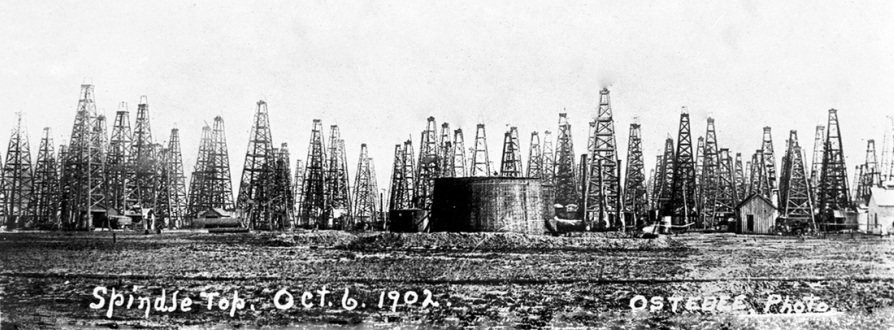
At the beginning of the 20th century, the Southeast Texas economy, like that of most of the South, relied on subsistence agriculture, but cattle ranching and the lumber business were also important. Large ranches sent cattle to New Orleans, and mills in Beaumont and Orange produced lumber for shipment to the rest of America and overseas. Southeast Texas had another resource – oil – but the amount underground remained a mystery.
People knew of oil in the area for hundreds of years before any substantial production began. In 1543 the Spanish used the oil from seeps near Sabine Pass for caulking their ships, although local Indians certainly knew of oil much earlier. To the north, settlers near Nacogdoches used seeping oil for lubricants before 1800. In 1847, the settlers at Sour Lake noticed that oil was bubbling to the surface, and after the Civil War Dick Dowling tried unsuccessfully to drill a well near there. There were numerous discoveries in east and central Texas in the later years, especially at Corsicana in 1896. Wildcatters drilled at Spindletop in 1893 and 1896 and at Sour Lake in 1896. However, there was no significant oil production along the Gulf Coast until the gusher at Spindletop in 1901. Total Texas oil production was 836,000 barrels in 1900, a small fraction of national production (63 million barrels).
Listen to Patillo Higgins talk about his life and work at Spindletop and other Texas oil fields through The University of Texas Briscoe Center for American History's "Oral History of the Texas Oil Industry." Also available are oral histories from Al and Curt Hamill, and other early oil pioneers recorded in the early 1950s.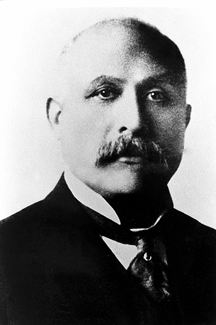 The Spindletop oilfield, discovered on a salt dome formation south of Beaumont in eastern Jefferson County on January 10, 1901, marked the birth of the modern petroleum industry. The Gladys City Oil, Gas, and Manufacturing Company, formed in August 1892 by George W. O'Brien, George W. Carroll, Pattillo Higgins, Emma E. John and J. F. Lanier, was the first company to drill on Spindletop Hill. Three shallow attempts, beginning in 1893 and using cable-tool drilling equipment were unsuccessful; Lanier and Higgins had left the company by 1895.
The Spindletop oilfield, discovered on a salt dome formation south of Beaumont in eastern Jefferson County on January 10, 1901, marked the birth of the modern petroleum industry. The Gladys City Oil, Gas, and Manufacturing Company, formed in August 1892 by George W. O'Brien, George W. Carroll, Pattillo Higgins, Emma E. John and J. F. Lanier, was the first company to drill on Spindletop Hill. Three shallow attempts, beginning in 1893 and using cable-tool drilling equipment were unsuccessful; Lanier and Higgins had left the company by 1895.
Anthony F. Lucas, the leading United States expert on salt dome formations, made a lease with the Gladys City Company in 1899. Higgins and Lucas made a separate agreement a month later. With Lucas in charge of the drilling operation, another attempt was made on the John Allen Veatch survey on Gladys City Company lands. Lucas was able to drill to a depth of 575 feet before running out of money. He was also having great difficulty with the tricky sands of the salt dome. Despite the negative reports from contemporary geologists, Lucas remained convinced that oil was in the salt domes of the Gulf Coast. He finally secured the assistance of John H. Galey and James M. Guffey of Pittsburgh. Much of the Guffey and Galey support was financed in turn by the Mellon interest; their terms excluded Higgins and left Lucas with only a small share of the potential profits. Nonetheless, Lucas pressed ahead in his effort to vindicate his theories. Galey and Guffey played a crucial role by bringing in Al and Curt Hamill, an experienced drilling team from Corsicana.
Lucas spudded in a well on October 27, 1900, on McFaddin-Wiess and Kyle land that adjoined the Gladys City Company lands. A new heavier and more efficient rotary type bit was used. From October to January 1901, Lucas and the Hamills struggled to overcome the difficult oil sands, which had stymied previous drilling efforts. On January 10, mud began bubbling from the hole. The startled roughnecks fled as six tons of four-inch drilling pipe came shooting up out of the ground. After several minutes of quiet, mud, then gas, then oil spurted out. The Lucas geyser, found at a depth of 1,139 feet, blew a stream of oil over 100 feet high until it was capped nine days later and flowed an estimated 100,000 barrels a day. Lucas and the Hamills finally controlled the geyser on January 19, when a huge pool of oil surrounded it, and throngs of oilmen, speculators and onlookers had transformed the city of Beaumont.
A new age was born. The world had never seen such a gusher before. By September 1901, there were at least six successful wells on Gladys City Company lands. Wild speculation drove land prices around Spindletop to incredible heights. One man who had been trying to sell his tract there for $150 for three years sold his land for $20,000; the buyer promptly sold to another investor within 15 minutes for $50,000. One well, representing an initial investment of under $10,000, was sold for $1,250,000. Beaumont's population rose from 10,000 to 50,000. Legal entanglements and multimillion-dollar deals became almost commonplace. An estimated $235 million had been invested in oil that year in Texas; while some had made fortunes, others lost everything.
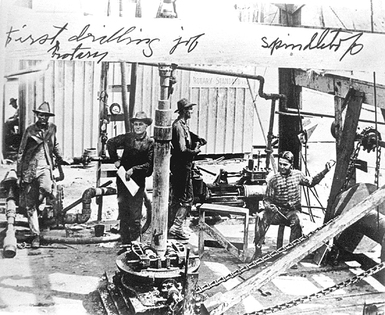 The overabundance of wells at Spindletop led to a rapid decline in production. After yielding 17,500,000 barrels of oil in 1902, the Spindletop wells were down to 10,000 barrels a day in February 1904. Deposits from the shallow Miocene caprock seemed to diminish, but the Spindletop oilfield had not yet dried out.
The overabundance of wells at Spindletop led to a rapid decline in production. After yielding 17,500,000 barrels of oil in 1902, the Spindletop wells were down to 10,000 barrels a day in February 1904. Deposits from the shallow Miocene caprock seemed to diminish, but the Spindletop oilfield had not yet dried out.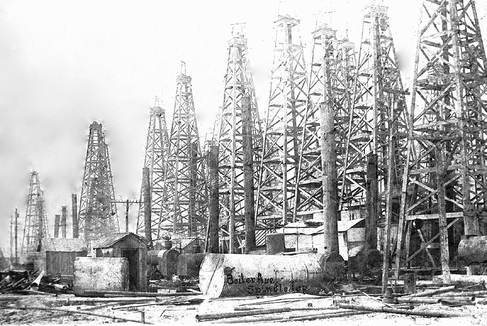 The discovery of the Spindletop oilfield had an almost incalculable effect on world history, as well as Texas history. Eager to find similar deposits, investors spent billions of dollars throughout the Lone Star state in search of oil and natural gas. The cheap fuel they found helped to revolutionize American transportation and industry. Storage facilities, pipelines and major refining units were built in the Beaumont, Port Arthur, Sabine Pass and Orange areas around Spindletop.
The discovery of the Spindletop oilfield had an almost incalculable effect on world history, as well as Texas history. Eager to find similar deposits, investors spent billions of dollars throughout the Lone Star state in search of oil and natural gas. The cheap fuel they found helped to revolutionize American transportation and industry. Storage facilities, pipelines and major refining units were built in the Beaumont, Port Arthur, Sabine Pass and Orange areas around Spindletop.
By 1902, there were more than 500 Texas corporations doing business in Beaumont. Many of the major oil companies were born at Spindletop or grew to major corporate size as a result of their involvement at Spindletop. The Texas Company (later Texaco), Gulf Oil Corporation, Sun Oil Company, Magnolia Petroleum Company and Humble (later Exxon Company, U.S.A.) were a few of the major corporations.
The Spindletop oilfield again boomed in the 1950s, with the production of sulphur by Texas Gulf Sulphur Company (later Texasgulf ), until about 1975. Salt-brine extraction became a lucrative operation in the 1950s. In 1963–66 even deeper oil production was achieved with an average depth of 9,000 feet. The old field continued in the 1990s to yield very limited oil production in the form of stripper wells and salt brine production. Some parts of the salt dome cavities were being developed as storage facilities for petroleum products.
In commemoration of the importance of the development of Spindletop oilfield, a Texas pink granite monument was erected in 1941 near the site of the Lucas gusher. The withdrawal of oil, sulphur and brine from beneath the surface, however, caused the Spindletop dome to subside, and the monument was moved to the recreated Spindletop/Gladys City Boomtown Museum across the highway on the Lamar University campus at Beaumont. The Gladys City Company, as well as many major oil companies, continued to reap the benefit of their involvement in the discovery of the Spindletop oilfield. - from The Handbook of Texas Online
Gladys City
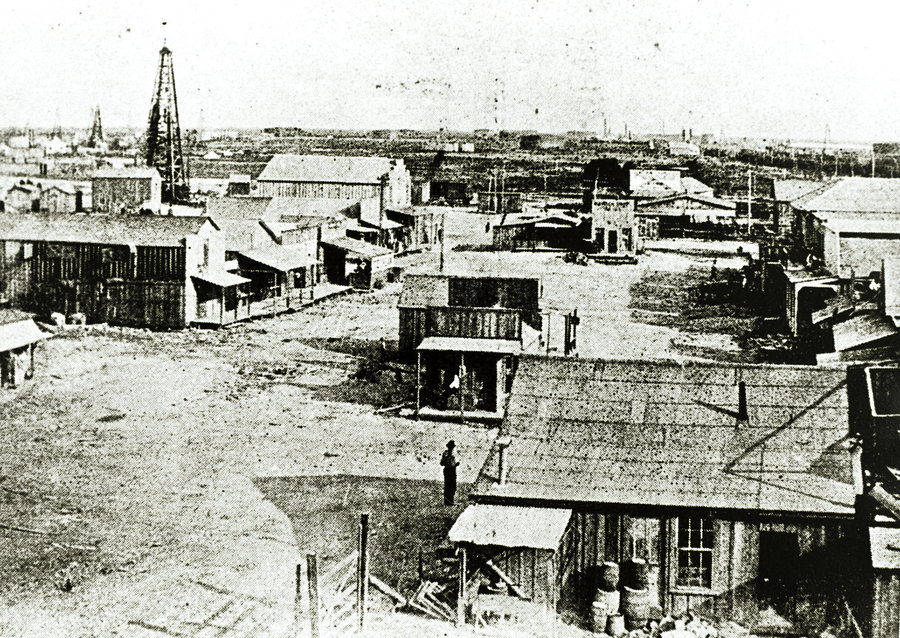
Patillo Higgins envisioned Gladys City before drilling ever started at Spindletop. The town was named after Gladys Bingham, a girl in Mr. Higgins' Sunday School class. He wanted a city that would be an "industrial utopia." Plans for the city were drawn with areas for oil and gas wells, factories that would be fueled with the oil that would be brought in and homes and stores for the workers. After the Lucas Gusher blew in, the area that was designated for Gladys City grew up quickly. It was not the model town that Patillo Higgins had planned but it was one of the tamer parts of the oil field. Alcoholic drinks were not sold in Gladys City, and it became the area where families chose to settle.